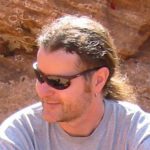Link to Pubmed [PMID] – 23986485
Link to DOI – 10.1242/jcs.128876
J Cell Sci 2013 Nov; 126(Pt 21): 4913-25
Eukaryotic cells use multiple routes for receptor internalization. Here, we examine the topographical relationships of clathrin-dependent and clathrin-independent endocytic structures on the plasma membranes of leukemia-derived mast cells. The high affinity IgE receptor (FcεRI) utilizes both pathways, whereas transferrin receptor serves as a marker for the classical clathrin-mediated endocytosis pathway. Both receptors were tracked by live-cell imaging in the presence or absence of inhibitors that established their differential dependence on specific endocytic adaptor proteins. The topology of antigen-bound FcεRI, clathrin, dynamin, Arf6 and Eps15-positive structures were analyzed by 2D and 3D immunoelectron microscopy techniques, revealing their remarkable spatial relationships and unique geometry. We conclude that the mast cell plasma membrane has multiple specialized domains for endocytosis. Their close proximity might reflect shared components, such as lipids and adaptor proteins, that facilitate inward membrane curvature. Intersections between these specialized domains might represent sorting stations that direct cargo to specific endocytic pathways.
